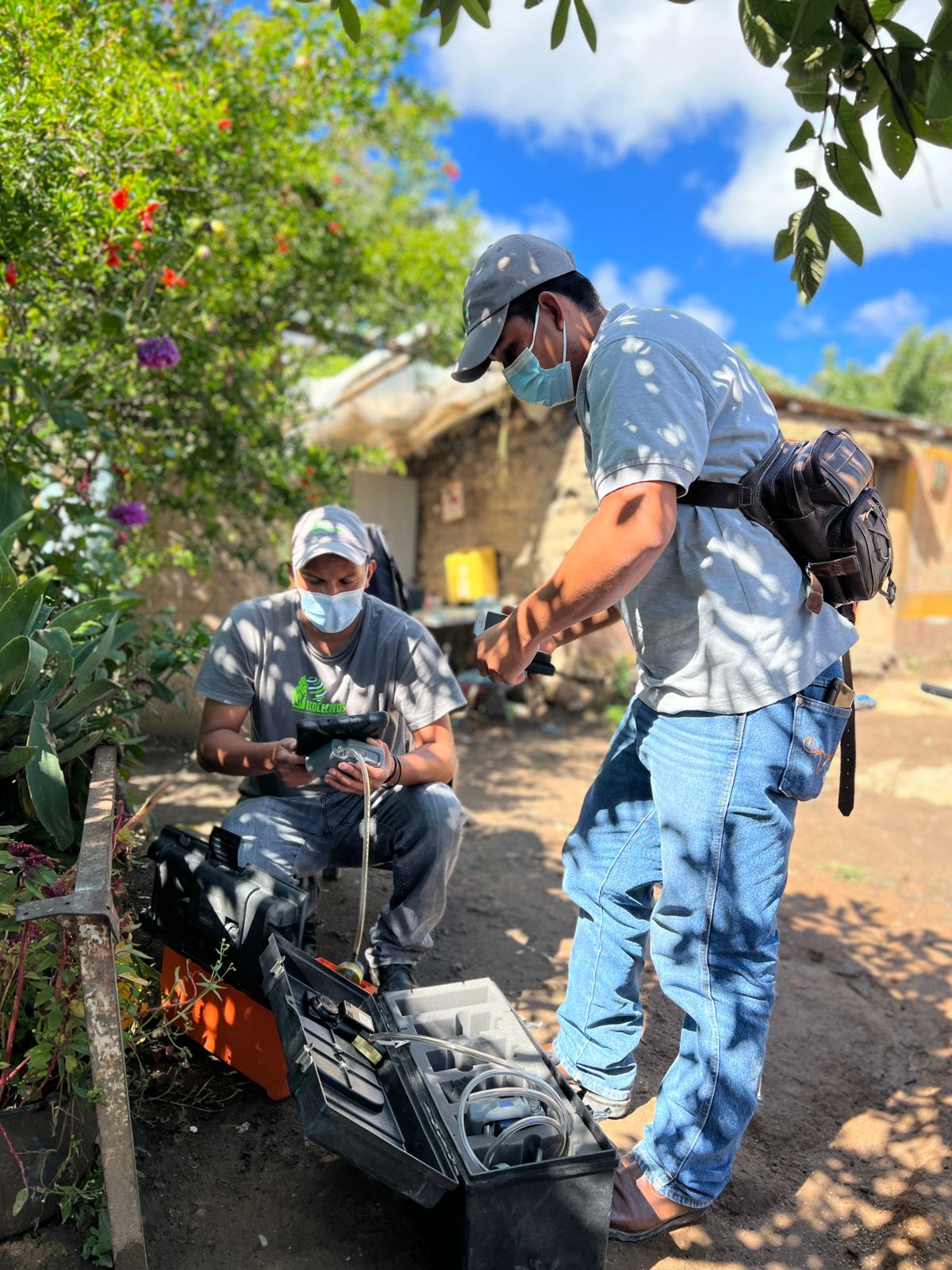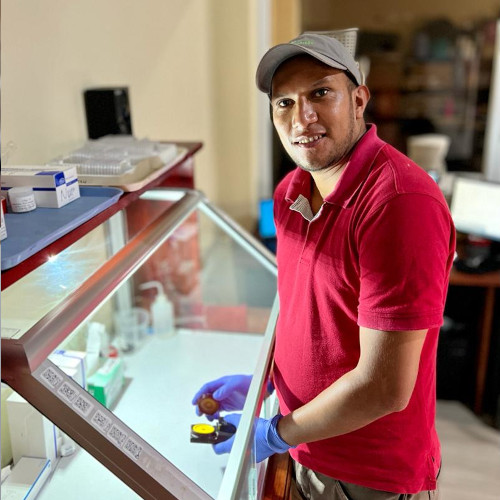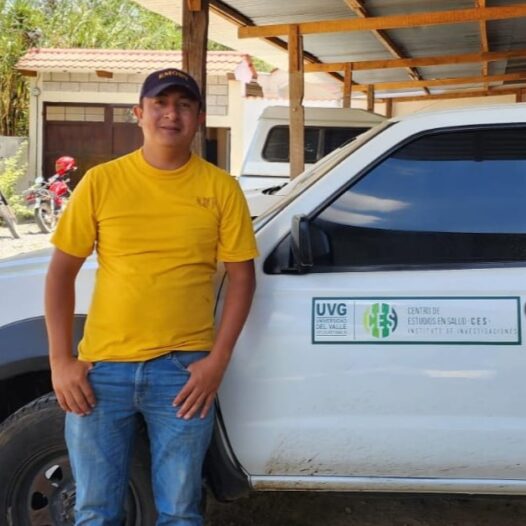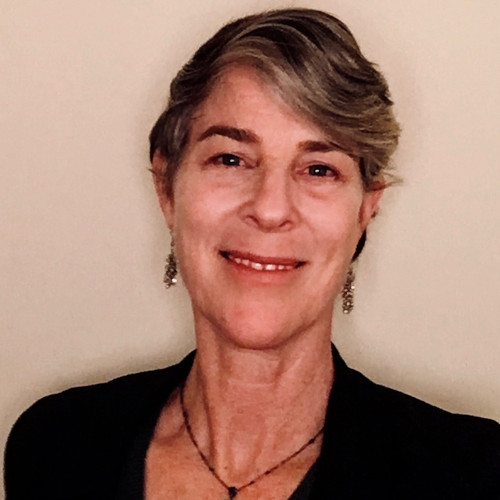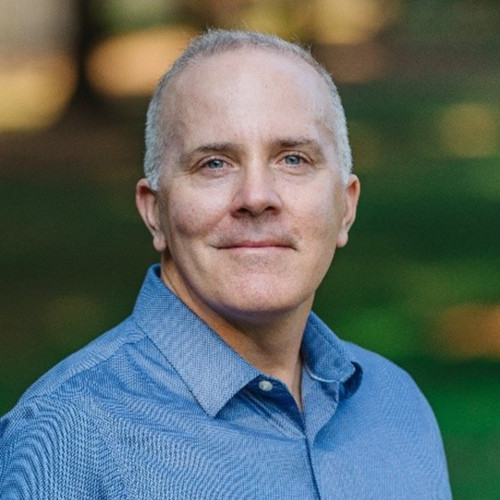OBJECTIVE
The main objective of the ECOLECTIVOS project is to solve the problem of poor management of plastic waste, focusing on not burning it. Working together with the rural communities of La Montaña de Santa Maria Xalapán, Jalapa,
The ECOLECTIVOS project was designed by the Center for Health Studies (CES) of the Universidad del Valle de Guatemala (UVG), and the Nell Hodgson Woodruff School of Nursing at Emory University, in the United States. We received funding from the U.S. National Institutes of Health (Combustion of plastic waste and human health effects in Guatemala,NIH: 5R01ES032009; clinicaltrials.gov: 5R01ES032009).
JUSTIFICATION
Few air pollution studies have focused on the domestic burning of plastic waste. While there are many global efforts to introduce clean fuels, these programs do not address the accumulation of plastic trash that is burned in homes. Additionally, few studies have examined community-driven efforts in rural areas to avoid home burning of this waste. Also, no intervention study has measured reductions in exposure to plastic combustion by-products, including phthalates and bisphenols, in women of reproductive age. Because of this, there are no estimates of global emissions from the incineration of plastic waste in developing countries.
METHODOLOGY
Our intervention uses COMMUNITY WORK GROUPS, to implement and evaluate strategies to reduce the burning of plastic waste. We use the theoretical framework of Capability, Opportunity and Motivation (guided by Michie's 'Wheel of Behavior Change' framework) to identify barriers and facilitators to sustain alternative activities to burning plastic. Glasgow’s RE-AIM framework will be used to assess fidelity of the intervention implementation, the scope and potential for scale-up.
APPROACH
The presence of single-use plastic materials and the practice of burning these materials are of particular interest. Through workshops and activities, the topics covered during the first 8 sessions of the working groups are:
- The health and environmental reasons NOT to burn these materials
- Good waste management and the importance of recycling
- Why and which materials are valuable waste to reuse
- Impacts that plastics have on the environment, on human health and on various animal species
- Sustainable alternatives to reduce the use of plastics
- The importance of the concept of Environmental Justice
- Examples of concrete and inspiring projects
At the end of the first 8 sessions, ECOLECTIVOS works with each community to choose local sustainable strategies based on community workgroup findings to reduce air pollution from burning plastic waste. This can take the form of recycling programs, community clean-up campaigns, reforestation, projects to make compost or to make handicrafts from plastic waste.
BIOMONITORING
Many studies in European countries and North America have found that low levels of phthalates and bisphenols from plastics impair neurological development, endocrine function, and reproductive function. However, there are no studies examining biomarkers of exposure to these compounds in women of reproductive age who are disproportionately exposed to airborne emissions from burning plastics. In ECOLECTIVOS, 400 women of reproductive age are randomly selected in 16 communities (8 receiving the intervention; 8 serving as controls), we are conducting biomonitoring and exposure measurements 3 times (baseline, at 4 and 12 months). We will compare urinary biomarkers of exposure to burning plastics (bisphenols, phthalates, polycyclic aromatic hydrocarbons, and volatile organic compounds) and personal exposure to airborne fine particulate matter (PM2.5) and black carbon (BC).
EXPOSURE ASSESSMENT
We will measure filter-based antimony (Sb) and 1,3,5-triphenylbenzene (TPB), both tracers of burning plastics. Based on these results, we will model the distribution of fine particles, black carbon, and gases to estimate air pollutant emissions from plastic incineration. In this way we can evaluate the potential effects of reducing emissions on air quality, not only in participating homes and towns, but also at a regional level in Central America.
OUR TEAM
Maria Renee Lopez
PRINCIPAL INVESTIGATORS / PRINCIPAL INVESTIGATORS
Universidad del Valle de Guatemala
Mayari Hengstermann
PRINCIPAL INVESTIGATORS / PRINCIPAL INVESTIGATORS
Universidad del Valle de Guatemala
Alexander Ramirez
Universidad del Valle de Guatemala
Waleska Aguirre
Universidad del Valle de Guatemala
Jorge Paniagua
Universidad del Valle de Guatemala
Abdias Misael Ramirez Mendez
IN JALAPA/IN JALAPA
Andrea Lizeth Figueroa Duarte
IN JALAPA/IN JALAPA
Evelia Aracely González Jiménez
IN JALAPA/IN JALAPA
Yosselin Maribel Merlos Mendoza
IN JALAPA/IN JALAPA
Carla Marleny Trinidad Salazar
IN JALAPA/IN JALAPA
Rodrigo Leonel Medina Salazar
IN JALAPA/IN JALAPA
Wagner Sanchez Castro
IN JALAPA/IN JALAPA
Ricardo David Ruano Ordonez
IN JALAPA/IN JALAPA
Mario Estuardo Hernandez Mateo.
IN JALAPA/IN JALAPA
Dana Boyd-Barr
Emory University
Annalyse Ferguson
Emory University
Margaret Handley
University of California, San Francisco
John P McCracken
University of Georgia
OUR PARTNERS




“EGHI Rapid Response Grant funding provided by the Emory Global Health Institute. The content is solely the responsibility of the authors and does not necessarily represent the official views of the Emory Global Health Institute.”













